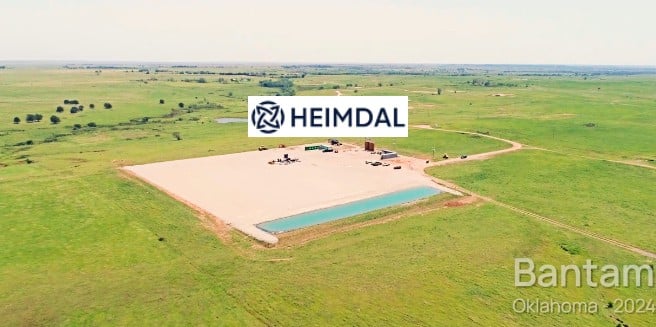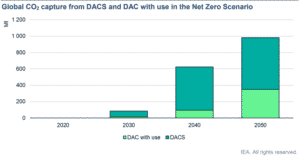A direct air capture (DAC) company, Heimdal Inc., inaugurated its first plant on August 13 in Oklahoma, marking a significant milestone in the carbon capture industry. The Bantam plant, located near Shidler on the Osage Nation Reservation, is now the largest operational DAC facility in the United States.
The plant is designed to capture over 5,000 tons of CO2 annually. This capacity makes it the second-largest DAC plant globally, just behind the one operated by Heirloom Carbon Technologies in California.
The captured carbon dioxide is used for enhanced oil recovery (EOR), a method of extracting more oil from existing wells. This makes Heimdal’s approach distinct from other carbon capture companies that focus on storing the CO2 underground.
A Swift Success: From Blueprint to Operation
The company’s achievement comes less than a year after Heimdal announced its plans for the Bantam plant. The Altman-backed startup has ambitious goals, with plans for a second, much larger facility that will capture one megaton of CO2 per year. This plant is expected to come online by 2026.
Heimdal’s Direct Air Capture (DAC) process removes CO2 from the atmosphere using an approach that leverages natural minerals. The process starts by heating quarried limestone, which releases calcium oxide. This calcium oxide is then exposed to air, where it acts as a sorbent to capture CO2.
After the CO2 is absorbed, the material is heated again to release the captured CO2. It can then be either stored or utilized for other purposes, such as enhanced oil recovery (EOR).
The key innovation in Heimdal’s process is the use of readily available materials and existing industrial technologies. This approach allows for a more cost-effective and scalable solution.
The DAC company has focused on optimizing this process to achieve a cost of capture below $200 per ton of CO2. This focus on cutting down costs makes Heimdal competitive with other carbon removal methods.
Unlike rivals such as Heirloom Carbon Technologies and Climeworks AG, which avoid using captured CO2 for EOR, Heimdal embraces this practice, supported by prominent investors like Sam Altman and Marc Benioff.
Pioneering a Cost-Effective Pathway to Carbon Capture
Heimdal’s approach is distinct in its combination of simplicity and effectiveness. It is leveraging the natural properties of limestone to create a viable pathway for large-scale carbon capture. By using materials that are widely available and technologies that are already in use in other industries, Heimdal aims to scale its operations quickly and contribute to global efforts to reduce atmospheric CO2 levels.
The startup CEO, Marcus Lima, remarked:
“Our focus has always been on getting things done first, and we are thrilled to share the results of that effort faster than thought possible and more affordably than ever achieved up until now.”
Heimdal’s rapid progress has been enabled by its use of widely available “off-the-shelf” materials. The startup is also employing an approach that prioritizes speed and affordability over immediate net carbon capture efficiency. For instance, until federal permits are obtained for permanent CO2 storage, the captured CO2 will be used for enhanced oil recovery, and the plant will temporarily rely on natural gas to power its operations.
The company is exploring the potential of sequestering CO2 permanently in underground wells, pending regulatory approval. It is also considering switching to electric kilns in the future.
The Broader DAC Landscape in the U.S.
The Bantam plant is part of a broader trend in the U.S. where over a dozen companies are entering the DAC market. This trend is spurred by federal tax incentives and growing corporate demand for carbon offsets.
Notably, Occidental Petroleum Corp. is also set to launch a commercial DAC operation in Texas in mid-2025. The facility boasts an initial capacity of 500,000 metric tons of CO2 per year. BlackRock has committed $550 million to invest in Occidental Petroleum’s DAC project in Ector County, Texas.
These DAC projects represent a significant step forward for carbon removal technology, which is seen crucial in fighting climate change. The International Energy Agency (IEA) emphasizes the importance of scaling up DAC to achieve global net zero emissions.
The technology’s ability to directly remove CO2 from the atmosphere offers a potential solution for decarbonizing industries that are difficult to electrify or reduce emissions by other means.
Heimdal’s direct air capture plant represents a significant step forward in the U.S. carbon capture landscape. It demonstrates the viability of DAC technology and setting the stage for future large-scale operations.
- CHECK OUT MORE: How Direct Air Capture Works (And 4 Important Things About It)



